Eye Health Tests: Far/Near Vision and Color Blindness Screening
Eye health is a critical yet often overlooked aspect of preventive healthcare. Vision problems can affect quality of life, productivity, learning outcomes, and overall safety. Early identification of visual impairments such as refractive errors or color blindness is essential, especially in occupational and educational settings.
The Clinics On Cloud Health Kiosk integrates advanced eye health screening capabilities—including far and near vision tests and color blindness screening—into its comprehensive full body checkup. This article explores these tests, how they are performed, their significance, and the benefits of routine vision screening through the kiosk.
Importance of Eye Health Screening
Visual impairments can impact daily functioning and may worsen if left undiagnosed. Uncorrected refractive errors are among the leading causes of vision disability globally, and color vision deficiencies can limit career choices and safety in certain professions.
Routine eye screening promotes early correction, reduces eye strain and headaches, and enhances safety and productivity. Integrating eye tests into general health checks increases screening coverage and health literacy.
Tests Included in Clinics On Cloud Health Kiosk Eye Screening
1. Far and Near Vision Test
- The kiosk uses a digital Snellen chart displayed on the touchscreen monitor.
- For far vision, users view the chart from a set distance and identify letters or symbols, scoring their visual acuity.
- Near vision tests use print or screen-based charts to assess the ability to see objects at close range.
- The system automatically scores results based on standard vision classification (e.g., 6/6 normal, 6/12 mild impairment).
- The digital interface includes audio instructions and multiple language support for easy user guidance.
2. Color Blindness Screening
- The kiosk presents pseudoisochromatic plates (like Ishihara plates) or similar validated color vision tests.
- Users identify numbers or patterns in colored dot matrices designed to detect common red-green color deficiencies.
- Results help identify those with color vision impairments, which may impact professional suitability and daily tasks.
How the Eye Tests Work Seamlessly on the Kiosk
The kiosk’s ergonomic design and interactive interface guide users through vision tests step-by-step, requiring minimal assistance. Results are immediately analyzed using software algorithms that compare answers to standard norms, providing instant digital reports flagged for possible vision issues.
For cases with detected impairments, users can be referred for comprehensive eye exams with ophthalmologists or optometrists through integrated telemedicine consultations or local care pathways.
Benefits of Vision Screening via Clinics On Cloud Kiosk
- Early Detection: Catch refractive errors or color deficiencies before they significantly impact life quality.
- Convenience: Incorporated within a holistic health check, avoiding separate appointments.
- Accessibility: Suitable for schools, workplaces, rural camps, and clinics without specialized ophthalmic equipment.
- User-Friendly: Multilingual instructions and engaging digital interfaces encourage participation.
- Integration: Results are stored securely for monitoring trends or supporting referral decisions.
Use Cases
- Schools to identify vision problems early for better academic performance.
- Workplaces requiring vision fitness for safety-sensitive jobs.
- Rural and underserved areas where eye care access is limited.
- Routine health screenings in clinics and wellness centers.
Conclusion
Incorporating far/near vision and color blindness screening into the Clinics On Cloud Health Kiosk expands preventive healthcare’s reach to include vision—a vital sensory function. Quick, accurate, and user-friendly, these tests support early intervention and referral, protecting users from avoidable visual impairment complications. The comprehensive kiosk model ensures eye health is not overlooked, contributing to better overall health outcomes and safer, more productive communities.

